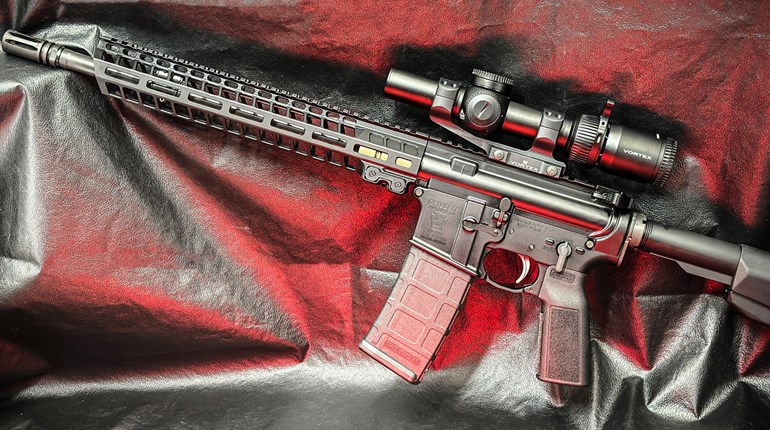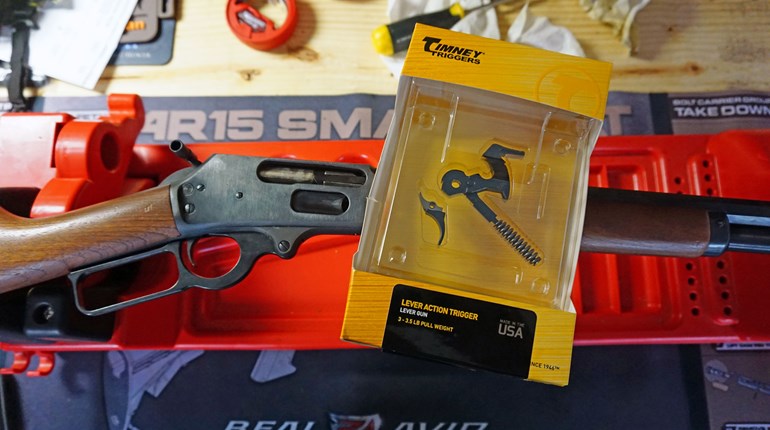
Whether single-stage—like Timney’s AR-15 Competition—or two-stage—like Geissele’s SSA—upgrading a trigger is a big step toward better accuracy.
Lately, our society has been plagued by words and phrases that, while seemingly common, often cause confusion or frustration, even leading to occasional gunfire. Of course, I am talking about “single-stage” and “two-stage” rifle triggers and the difficulty in deciding between them.
For much of firearms history, trigger selection was like riding an amusement park monorail—we were along for the ride on a course we did not plot: “Next stop, crappy Mil-Spec with 12-pound pull weight and 10 pounds of grit.” Even a short decade ago we still blindly accepted factory triggers because scant alternatives existed off the shelf. Excepting custom rifles and high-end rigs, that meant heavy, creepy, lawyer-proof triggers that induced all manner of bad shooting habits. Improvement on these triggers was left to gunsmiths and hobbyists.
Thankfully, today’s firearms manufacturers have responded to consumer desires for better triggers. Savage Arms was the first company I am aware of that provided an easily adjustable, match-quality trigger assembly in factory guns (the Accu-Trigger) and other bolt-gun makers grudgingly followed suit. Likewise, entrepreneurial shooters—often with engineering backgrounds—have developed much better triggers for the aftermarket. Competitive-shooter-owned companies like Geissele Automatics offer such high-quality, popular triggers that manufacturers have been forced to step up and produce better products or offer high-quality aftermarket triggers as OEM products.
Unfortunately, crummy triggers are still being placed in factory guns—particularly lever-actions, single-shots and rack-grade semi-autos—and there are untold numbers of existing rifles with their original heavy triggers. Some of those are easy to replace and others still require a gunsmith’s services to clean up. If you need a new drop-in unit for a bolt-action or semi-auto platform, there is a good chance you have options. Timney Triggers and Rifle Basix each offer better triggers for two dozen or more rifles. When sorting through the choices, the first thing to decide is whether you need a single- or two-stage trigger. Each has its merits and detractions and with practice, either type can be used for just about any shooting pursuit.
Single-stage triggers are most commonly encountered in factory lever guns, rack-grade bolt-action rifles and service arms. But, they do not all feel the same when pulled. Good single-stage triggers have no travel or “take-up” and break cleanly at a consistent weight for tens of thousands of cycles. Lesser models—which are usually still very reliable—exhibit the opposite characteristics. Mil-Spec AR triggers are a good example of the latter, stacking up in weight and grit when pulled. So-called “match triggers” have lighter pull weights that are often measured in ounces.
The beauty of precision single-stage triggers is that there is no mystery involved in when they will allow a firearm to fire: Place your finger on the trigger, apply just enough rearward pressure and you are rewarded with a bang from your blaster. They work very well for accuracy-driven pursuits, but are less suited for high-stress situations where a feather-light pull weight can get you into trouble.
That is not to say you cannot survive a life-or-death situation with a single-stage trigger. Successful rifle shooters have done just that for centuries—this author included. But, I will say that a half-pound, single-stage trigger is not the best option for close-quarters work or run-and-gun competitions. Triggers with heavier break weights or those designed for 3-gun competition, such as JP Enterprises’ models, are better options for action-shooting events. These triggers typically have a small amount of travel before they break and minimum overtravel, leading to faster resets and follow-up shots.
While more difficult to use for slow-aimed fire, many people find 3-gun triggers to be the easiest to use for rapid strings. Improved Mil-Spec triggers from companies like ALG Defense fit in here, too. They are ultra-reliable, inexpensive and heavy enough to keep you out of trouble while still capable of helping you make very accurate shots.
Two-stage triggers require an extra pull range to facilitate firing. The first stage is often the longer and heavier portion of the pull and sometimes referred to as “slack.” It terminates at the beginning of the second stage—which feels just like a crisp, single-stage trigger once reached. The main difference between single- and two-stage triggers at that point is if you release a two-stage trigger without firing, the return or trigger spring will push it forward, back through the first stage. So when you fire later, you will pull through that first stage again. Two-stage triggers used to be considered poor choices for fighting rifles: too long in pull and too slow to reset in a situation where fractions of seconds can separate life and death.
I have never bought into this theory, though, because I had two-stage, match triggers on military-issue [semi-auto] sniper rifles and CQB carbines that served me just fine while up close and personal with people trying to kill me. My teammates and I preferred two-stage triggers to shoot accurately at long ranges without the light trigger liability of a single-stage at close range. Today’s two-stage triggers are used widely in military SOF, law enforcement, competitive and defensive applications.
The aftermarket is full of excellent single- and two-stage trigger options. Regardless of which type you chose, you must further select an appropriate weight for your shooting style. More important than the type selected is that you practice with your new trigger. Most centerfire rifles are perfectly safe to dry-fire, so spend time figuring out how best to make your trigger speak just the right language, which is a whole different can of worms.



































